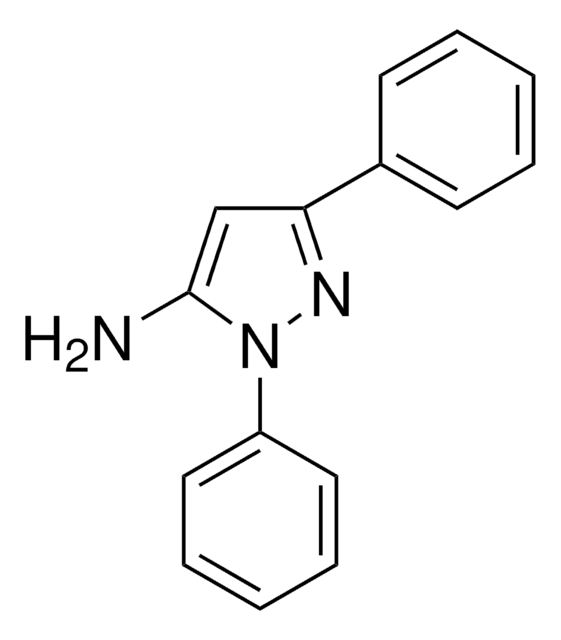204250
Rubidium chloride
99.95% trace metals basis
Sinónimos:
Rubidium monochloride, Rubidium(1+)chloride
Iniciar sesiónpara Ver la Fijación de precios por contrato y de la organización
About This Item
Fórmula lineal:
RbCl
Número de CAS:
Peso molecular:
120.92
Número CE:
Número MDL:
Código UNSPSC:
12352302
ID de la sustancia en PubChem:
NACRES:
NA.23
Productos recomendados
Nivel de calidad
Ensayo
99.95% trace metals basis
Formulario
powder and chunks
impurezas
≤550.0 ppm Trace Metal Analysis
mp
715 °C (lit.)
densidad
2.8 g/mL at 25 °C (lit.)
cadena SMILES
[Cl-].[Rb+]
InChI
1S/ClH.Rb/h1H;/q;+1/p-1
Clave InChI
FGDZQCVHDSGLHJ-UHFFFAOYSA-M
¿Está buscando productos similares? Visita Guía de comparación de productos
Categorías relacionadas
Aplicación
- A Study on the Removal of Impurity Elements Silicon and Zinc from Rubidium Chloride by Vacuum Distillation: This research focuses on the purification of rubidium chloride from impurities like silicon and zinc, which is crucial for maintaining the quality and effectiveness of this compound in various applications (Cui et al., 2024).
- Effect of a Rubidium Chloride Carrier Confinement Layer on the Characteristics of CsPbBr3 Perovskite Light-Emitting Diodes: This article explores the impact of rubidium chloride as a confinement layer in light-emitting diodes, enhancing the performance of these devices, relevant for chemists working on advanced materials and electronic devices (Li et al., 2022).
- Rubidium chloride modulated the fecal microbiota community in mice: This research assesses the effects of rubidium chloride on the fecal microbiota in mice, providing insights that could be useful for studies related to gut health and its impact on overall well-being (Chen et al., 2021).
Código de clase de almacenamiento
11 - Combustible Solids
Clase de riesgo para el agua (WGK)
WGK 2
Punto de inflamabilidad (°F)
Not applicable
Punto de inflamabilidad (°C)
Not applicable
Equipo de protección personal
Eyeshields, Gloves, type N95 (US)
Elija entre una de las versiones más recientes:
¿Ya tiene este producto?
Encuentre la documentación para los productos que ha comprado recientemente en la Biblioteca de documentos.
Los clientes también vieron
Yucheng Jiang et al.
Biophysical chemistry, 118(1), 25-30 (2005-07-26)
Electromotive force (emf) of the chemical cell without liquid-junction K-ISE | RbCl/CsCl ( m(E)) | ISE-Cl and K-ISE | RbCl/CsCl (m(E)), amide (m(N)) | ISE-Cl, have been measured at 298.15 K, where m(E)=(0.005 to 0.5) mol kg(-1) and m(N)= (0.05
Ferenc Horkay et al.
The Journal of chemical physics, 125(23), 234904-234904 (2006-12-28)
The distribution of counterions in solutions of high molecular mass hyaluronic acid, in near-physiological conditions where mono- and divalent ions are simultaneously present, is studied by small angle neutron scattering and anomalous small angle x-ray scattering. The solutions contain either
M L Główka et al.
Acta crystallographica. Section D, Biological crystallography, 61(Pt 4), 433-441 (2005-04-05)
Gramicidin D (gD) is a naturally occurring ionophoric antibiotic that forms membrane channels specific for monovalent cations. The crystal structure of the RbCl complex of gD has been determined at 1.14 A resolution from low-temperature (100 K) synchrotron-radiation data with
Grazyna Bystrzejewska-Piotrowska et al.
Journal of environmental radioactivity, 99(7), 1185-1191 (2008-03-18)
Ex vitro cultures of Pleurotus eryngii were carried out under controlled conditions using sterile medium composed of barley seeds. The influence of alkali and alkaline earth element salts (CsCl, KCl, NaCl, RbCl, and CaCl(2)) and tetraethylammonium chloride on incorporation of
Anton Granzhan et al.
Journal of the American Chemical Society, 133(18), 7106-7115 (2011-04-19)
A modular approach for the synthesis of cage structures is described. Reactions of [(arene)RuCl(2)](2) [arene = p-cymene, 1,3,5-C(6)H(3)Me(3), 1,3,5-C(6)H(3)(i-Pr)(3)] with formyl-substituted 3-hydroxy-2-pyridone ligands provide trinuclear metallamacrocycles with pendant aldehyde groups. Subsequent condensation reactions with di- and triamines give molecular cages
Nuestro equipo de científicos tiene experiencia en todas las áreas de investigación: Ciencias de la vida, Ciencia de los materiales, Síntesis química, Cromatografía, Analítica y muchas otras.
Póngase en contacto con el Servicio técnico










